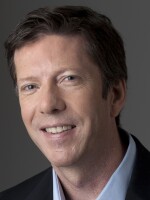Jesus Rivas and his family live near the modern international airport that serves El Salvador's capital city, San Salvador. But there's nothing modern about their small community.
The roads are dirt. Farm animals wander freely. And water comes from a well that was dug by hand.
Standing in his kitchen, Rivas pours a glass of that water. It's a cloudy yellow, and smells bad.
"We used to get stomach pains because of the parasites," he says, adding that his wife and son ended up in the hospital. After that, the family started paying for bottled water. They got by on 10 gallons a week. But even that was more than they could easily afford, Rivas says.
It's a familiar story in developing countries. At least 1 billion people worldwide drink water that contains bacteria, viruses, parasites and sometimes chemical pollutants. Most of this unsafe water could be cleaned up. But that's usually expensive. So humanitarian groups have been looking for cheaper ways to make contaminated water safe.
One of those groups is Living Waters for the World, based in Tennessee. Wil Howie of Living Waters says developing countries have similar water problems, whether they're in Central America, Africa, or Asia.
"It's always the children that capture my heart," Howie says. "You look into their eyes, and they're bright, they're intelligent. And then you see them drinking this water that makes them sick, and often it kills them."
Living Waters for the World trains people to install water filtration and purification equipment in developing countries. The group has come up with a simple system that produces clean water for about one penny a gallon, Howie says.
He says it's not meant to duplicate U.S.-style systems, which pipe drinkable water into every home.
"This really is an on-site water bottle filling station," Howie says. "People are able to fill bottles at a central location in a community and then carry it to their homes."
The standard system fits on a single sheet of plywood. It can clean about 300 gallons an hour using filters and an ozone treatment. The final product is as clean as what comes out of a typical American tap, Howie says.
He says this system is often the best option when it's too difficult, or costly, to drill a well that would produce clean water.
But he adds that no single solution works everywhere. Howie learned that in Mexico's Yucatan Peninsula.
"The Yucatan water is some of the worst water that we're dealing with," he says. "Not only is it bacteriologically contaminated, but they have the added complication of living in a limestone area so that the water has high degrees of calcium."
The calcium clogs up filters. Another problem in the Yucatan communities is that a lot of the water is salty. So Living Waters came up with a modified system. It uses a water softener to remove the calcium and a special filter to take out the salt.
The hardware for a typical Living Waters system costs about $2,300. That's relatively cheap. But it's still not practical for a single home, like the one where Jesus Rivas lives in El Salvador.
Ricardo Navarro of the Salvadoran Center for Appropriate Technology says he's found an answer for people like Rivas. It was invented at a university in Calgary.
"Some professor in Canada did this filter that we thought was very clever," Navarro says. "So I went to visit him and he was nice enough to give us his designs. So we have been promoting this filter. It's basically a bacteria layer that destroys all pathogens."
The device is called a biosand filter. Most are concrete. They stand about three feet high, and usually cost less than $50.
Water goes in the top and comes out a spigot on the side. In between, there's sand that acts as a filter.
After a week or two, good bacteria begin to grow on top of the sand, forming a layer known as the "schmutzdeck". It's not perfect. But parasites and most bad bacteria don't make it through the schmutz alive.
Jesus Rivas got his biosand filter from a group called Living Water International. He shows how it works by pouring in some dirty well water.
"When the water goes into the filter it is yellow," Rivas says. "After it comes out it is crystal clear."
Copyright 2022 NPR. To see more, visit https://www.npr.org.


